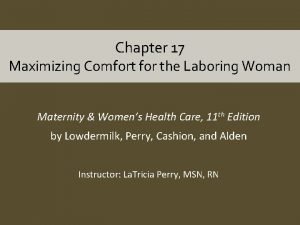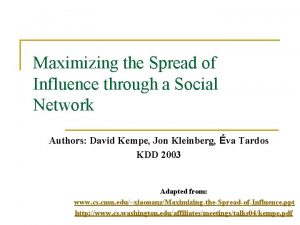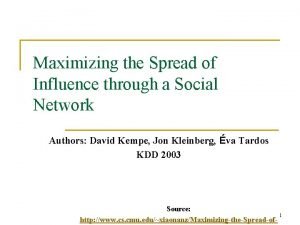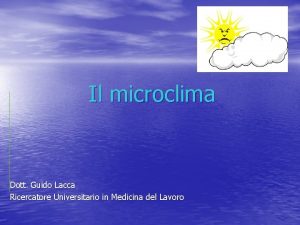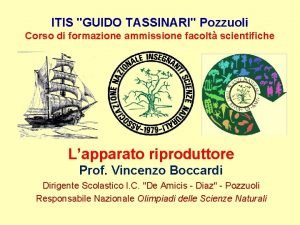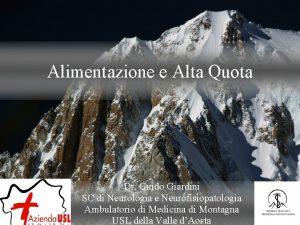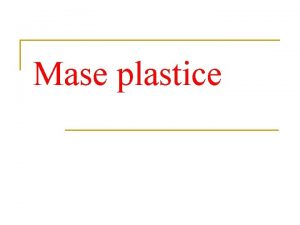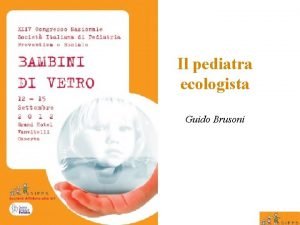Maximizing phytonutrient content Research and perspective Guido Mase





























































- Slides: 61

Maximizing phytonutrient content: Research and perspective Guido Mase’ 2016

Plant chemistry: - “Primary” metabolites - Proteins (structure/enzyme - Carbs (energy) - Fats (energy storage)

Plant chemistry: - “Secondary” metabolites - Phenolics - Terpenoids - Alkaloids - …and more!

Insecticide hypothesis: Dethier 1954 Fraenkel 1959

“Co-evolution” hypothesis: Erlich & Raven 1964

“Co-evolution” hypothesis: Erlich & Raven 1964


Is it really an “arms race”?

Carbon / nutrient balance hypothesis: • Secondary metabolites are often hydrocarbons, rich in carbon • When abundant nutrients are available, growth is preferred (primary met) • When nutrients are low, carbon metabolism increases (secondary met) Bryant 1983



Growth rate hypothesis: • As growth rate decreases, secondary metabolites increase Coley 1985

Growth/Differentiation Balance hypothesis: • If growth rate decreases, but photosynthesis stays high, carbon is diverted to secondary metabolites. Wilkens 1996, 1997


We’ve known about this “bell curve” of secondary plant metabolite production for a long time. Jonathan Gershenzon 1985: Phytochemical Adaptations to Stress Most likely all secondary plant metabolite production hypotheses are interrelated and relevant. But I’d like to propose another to add:

Is it really an “arms race”? No. We’re working together to support each other and the ecology


Bioflavonoids (such as morin) • First produced when plants emerged from the ocean. • UV protection, reduces DNA damage • Had initial browsing deterrent effects • Later, co-evolution often led to these molecules becoming useful mediators of symbiotic connections • NOW, we depend on them!

Bioflavonoids (such as morin) • First produced when plants emerged from the ocean. • UV protection, reduces DNA damage • Had initial browsing deterrent effects • Later, co-evolution often led to these molecules becoming useful mediators of symbiotic connections • NOW, we depend on them! High bioflavonoid intake = lower rates of chronic disease Knekt 2002

Bioflavonoids (such as morin) • First produced when plants emerged from the ocean. • UV protection, reduces DNA damage • Had initial browsing deterrent effects • Later, co-evolution often led to these molecules becoming useful mediators of symbiotic connections • NOW, we depend on them! High bioflavonoid intake = lower rates of breast cancer Shu 2009 (JAMA) follow-up in 2012 (Am. Journ. Clinical Nutrition) - Specifically for isoflavones, a secondary metabolite in legumes

Isoflavones: Necessary signals for nitrogen-fixing bacteria to colonize legume roots Rolfe 1998

Isoflavones: Carefully choreographed “dance” between plant and bacteria, with plant secondary metabolites as choreographers. Subramanian 2007

Isoflavones: By eliminating an isoflavone reductase gene, nodulation is severely impaired Ripodas 2013

Secondary plant metabolites are bioremediation agents: • Clear polycyclic aromatic hydrocarbons (Chen & Aitken 1999) • Metabolize and clear PCBs (Singer 2000) … degradation, not bioaccumulation, via coordination of microbial metabolism and activity!

Secondary plant metabolites are bioremediation agents: • Even ground-up plant material rich in secondary metabolites cleans the soil: pine needles, orange peel, ivy leaves (Hernandez 1997) … degradation, not bioaccumulation, via coordination of microbial metabolism and activity!

Plant secondary metabolites: - Not for “war” - Way more than just defense - Health benefits not a “coincidence”! - Cross-kingdom signals used to choreograph ecological function

Plant secondary metabolites: - They are essential! - Problem: Almost universally, these molecules are bitter-tasting

Over time, we have: - Bred plants to taste less bitter - Stimulated growth with extra fertility

Results: - Lower phytonutrient density - Primary metabolites / yield have been favored Jo Robinson, 2013

Results: - Wild olive trees have consistently greater polyphenol content (but lower yields!) Giovanna Massei, 2000

Christina Warinner, 2013 TEDEx talk: “Debunking the paleo diet”

We need a different approach: • Perhaps different cultivation ideas geared less to “high yield” • Plants as partner, not commodity


Secondary plant metabolites are induced by stress: Pine, Artemisia annua, basil Turtola 1995

Secondary plant metabolites are induced by stress: But excessive stress so minimizes yields as to be impractical (and less chemistry overall) Weiss 1997


Increasing CO 2 in the environment increases secondary plant metabolite production Zobayed 2003

Decreasing water leads to a 70 -fold increase in some metabolites, 2. 5 x more antioxidant capacity Zobayed 2005, Charles 2005

Decreasing water consistently elevates secondary metabolites in an inverse relationship Aznar 2011

Decreasing water consistently elevates secondary metabolites in an inverse relationship Aznar 2011

Sage grown in more arid conditions has higher concentrations of secondary metabolites, especially terpenes Selmar 2008

Decreasing water available to sage plants elevates the concentrations of secondary metabolites reliably and consistently Selmar 2013

Decreasing water available to sage plants elevates the concentrations of secondary metabolites reliably and consistently (old leaves and young leaves) Selmar 2013

Effects of drought stress and/or nutrient deprivation stress on phytonutrients

Effects of drought stress and/or nutrient deprivation stress on phytonutrients

Effects of drought stress and/or nutrient deprivation stress on phytonutrients

UV Radiation stress: Gotu Kola produces more bioflavonoids and saponins in response to moderate UV stress Muller 2013

Role of fertilizers / nutrients: Higher levels of nitrogen and phosphorus reduce secondary metabolite production (particularly in rhizosphere – less mycorrhizal cross-signaling molecules) Yoneyama 2013

Role of fertilizers / nutrients: But good levels of potassium seem to be important for medicinal plants to weather stress effectively, maintain phytonutrient levels Devi 2011

Implications:

Implications: • Plants know what they’re doing (most likely better than we do) • This implies a measure of trust in our partners

Implications: • Plants provide benefit to soil, ecology, environment

Implications: • Plants provide benefit to soil, ecology, environment • Bacterial symbionts, mycorrhizae

Implications: • Plants provide benefit to soil, ecology, environment • Pollinators

Implications: • Plants provide benefit to soil, ecology, environment • Humans

Implications: • Medicinal plants seem to benefit from “benign neglect”

Implications: • Medicinal plants seem to benefit from “benign neglect” • Relatively less nitrogen, phosphorus (N, P) • Normal potassium (K) • Try: • topsoil with only a little compost on the surface • Jersey Greensand (K, minerals, and slow-release P)

Implications: • Medicinal plants seem to benefit from “benign neglect” • Lower water if possible • High drainage (raised areas and/or swales) • NO irrigation (depending on climate) • SALT? ? (50 m. M, approx 3 g/L)

Implications: • Medicinal plants seem to benefit from some browsing • Allow some insect activity (hard not to!) • Mowing / cutting naturalized perennials on rotation • Harvest and make plant medicine!

Plant secondary metabolites: - Not for “war” - Way more than just defense - Health benefits not a “coincidence”! - Cross-kingdom signals used to choreograph ecological function

Thank you.
 What is esp
What is esp What is a single price monopoly
What is a single price monopoly Static content vs dynamic content
Static content vs dynamic content How to draw stairs in 2 point perspective
How to draw stairs in 2 point perspective Silo perspective vs business process perspective
Silo perspective vs business process perspective Simultaneous multithreading: maximizing on-chip parallelism
Simultaneous multithreading: maximizing on-chip parallelism Profit-maximizing price formula
Profit-maximizing price formula Single price monopoly graph
Single price monopoly graph Maximizing instructional time in the classroom
Maximizing instructional time in the classroom Customer lifetime value maximization
Customer lifetime value maximization Perfect competition profit maximization
Perfect competition profit maximization Utility maximizing combination
Utility maximizing combination Profit maximizing output
Profit maximizing output Perineal anesthesia
Perineal anesthesia Bestmilk
Bestmilk Maximizing the spread of influence through a social network
Maximizing the spread of influence through a social network Maximizing the spread of influence through a social network
Maximizing the spread of influence through a social network Maximizing area
Maximizing area Onboarding new employees maximizing success
Onboarding new employees maximizing success Profit maximization
Profit maximization Motor power constant
Motor power constant Return on security investment
Return on security investment Research approach
Research approach Marketing content analysis
Marketing content analysis Simple content analysis
Simple content analysis Component of research proposal
Component of research proposal Content of a research proposal
Content of a research proposal Guido gerig
Guido gerig Guido governatori
Guido governatori Guido gerig
Guido gerig Interateneo
Interateneo Guido lemos de souza filho
Guido lemos de souza filho La coscienza di zeno il nuovo impianto narrativo
La coscienza di zeno il nuovo impianto narrativo Guido lacca
Guido lacca Guido van rossum biografia
Guido van rossum biografia Guinizzelli io voglio del ver
Guinizzelli io voglio del ver Enoglasno liturgično petje
Enoglasno liturgično petje Binask guido
Binask guido Sindrome di cockett
Sindrome di cockett Guido vreuls
Guido vreuls Susumu mori
Susumu mori Guido gerig
Guido gerig Baziel en flavie
Baziel en flavie Guido peña reyes
Guido peña reyes Guido bondolfi
Guido bondolfi Analisi del testo lo vostro bel saluto e 'l gentil sguardo
Analisi del testo lo vostro bel saluto e 'l gentil sguardo Guido musso
Guido musso Guido d'arezzo mappa concettuale
Guido d'arezzo mappa concettuale Kantonale steuerverwaltung zug
Kantonale steuerverwaltung zug Organo genitale femminile immagini vere
Organo genitale femminile immagini vere Ics guido monaco
Ics guido monaco Guido cervone
Guido cervone Guido rocha tortured christ
Guido rocha tortured christ Guido marcangeli
Guido marcangeli Guido vedovato
Guido vedovato Guido cacciapuoti scultore
Guido cacciapuoti scultore Vertical y horizontal
Vertical y horizontal Jose maria guido
Jose maria guido Guido ipsen
Guido ipsen Guido giardini
Guido giardini Guido altarelli
Guido altarelli Benedict fehringer
Benedict fehringer













